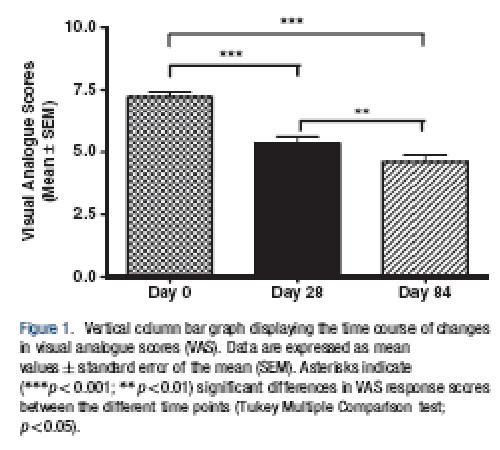Recent poster demonstrated how use of lidocaine patches reduced area of pain in traumatic neuropathies about the knee. These were not recent operative cases. Could this work for all post surgical pain problems?
IASP Poster Presentation Number: PW 421, Montreal 2100
SUCCESSFUL MANAGEMENT OF POSTSURGICAL/ TRAUMATIC NEUROPATHIC PAIN USING 5% LIGNOCAINE MEDICATED PLASTER:CASE SERIES OF FOUR CASES
A. Ghei1, S. Krishna2, S. Khot1
- 4 cases of chronic neuropathic pain about knee; they had previously had surgery at one point
- pains were 6-8/10
- 6-8 weeks of lidocaine 5% plasters and one week off before being reassessed
- 3/4 had greater than 70% relief even after 1 week no use
- “On further follow up after 8-10 weeks the patients reported almost complete relief from allodynia with no return of symptoms despite discontinuation of patches.”
A published article confirms some:
Management of neuropathic pain after surgical and non-surgical trauma with lidocaine 5% patches: study of 40 consecutive cases
Current Medical Research and Opinion
November 2009, Vol. 25, No. 11 , Pages 2737-2743
Guy Hansa, Ellen Joukesb, Johanna Verhulstc, Marcel Vercauterena
- 40 cases – neuropathic pain near the scar
- lidocaine 5% patches – 12 hours on – 12 hours off
Pain results:
This was a diverse set of post op scar pains.
I would knock out the nerve neuroma in the scar with semi-neurolytic pontocaine first:
Clin J Pain. 2001 Dec;17(4):323-6.
High-concentration tetracaine for the management of trigeminal neuralgia: quantitative assessment of sensory function after peripheral nerve block.
Radwan IA, Saito S, Goto F. abstract here
The Pontocaine comes in 20 mg dry powder vials. I put 0.5 mls spinal 5% lidocaine in it and dissolve the powder, making it 4% tetracaine. This leaves you enough for injecting one site but will leave a long-lasting numbness in area – need to warn about that as some don’t like the numbness. One may want to try local and Kenalog steroid mix first.
Then one could go to patches – though it could take several injections to get all the spots…
I am told lidocaine plaster/patches would be used 2-3 times a day for 42- 60 days. That would cost. Lidoderm patches in US cost $216.00/30 in a box = 7.2 dollars a patch. In some European countries they have plasters that are $2.00/patch apparently.
You would need 84 – 180 patches for a course of therapy. This would be 600 – 1200 dollars altogether for Lidoderm in US(though if only using once daily would be half that or less)
Lidoderm patches are not available in Canada so I have devised a cheap alternative – gelatin patches – There are ridiculously easy to make. See:
Making Your Own Lidocaine Patches
I have one gentleman using the patches for what appears to be a nerve entrapment. I was amazed to find the tissue tenderness is all better except over the entrapment site. He’s feeling better too.
The study with once daily patches didn’t get as good results and the other study and I’m thinking I would use more unless the skin got irritated some – skin get mushy _ heck just dry it out with a hair drier maybe?
Any experience with it?
Would be nice to try it in post-hernia pains.


i have ankilosing spodilitis bad i am on 1000 mg of lidocaine onder the skin i do it evrry 21 day it work 5 out of 10 or close i like to nohow long i will have to use it? tx
Pingback: Chronic Facial Pain Needs Help | Pain Medical Musing